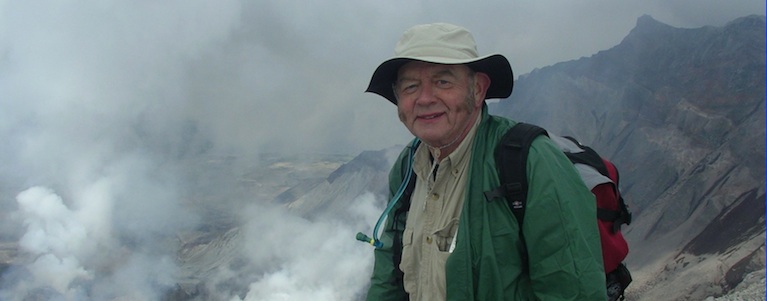Science and Digital Briefs June 20, 2018
By Dave Bunting, Shopper Editor
IQ has been declining since WWII 
Research has found that human IQ has been declining since WWII. It had been increasing continuously before then through much of human history.
The loss in intelligence is suspected to be related to our increasing dependence on intelligent machines (i.e. “computers”) to make our mundane minute-by-minute as well as major life choices of how to live and do things, how to fulfill our needs, instead of exercising and thus expanding our minds to “figure it out for ourselves.”
In a closely related study, the group found that higher exposure to commercial television reduces cognitive ability and high school graduation rates for boys. The effects appear to be driven by consumption of light television entertainment crowding out more cognitively stimulating activities. Point estimates suggest that the effects are most negative for boys from more educated families. They found no effect on high school completion for girls, pointing to the growth of non-educational media as a factor in the widening educational gender gap, though the study needs to be looked at carefully to determine whether boys’ and girls’ television watching is the same or different. Girls are rapidly gaining on boys in both school attainment and both business and political success.
Similar ideas are explaining the decline in demand for college education.
Certainly, many jobs require the full four-year or more college degrees; upon such professional jobs, and the beautiful education that supports them, rests the scientific health and world-leading strength and advancement of the US, and indeed of the world. The tiny effort by me here in the Shopper in rural Lewis County to point local students toward STEM (Scientific, Technological, Engineering and Mathematical) education is my contribution toward encouraging our students to four-year or more professional degree education.
But also, a big share of the jobs formerly requiring four-year degree-level knowledge are now assisted, almost replaced, very strongly and fundamentally by intelligent machines. Starting and rote operation of a machine, even an intelligent one, usually doesn’t require the four-year-degree level of knowledge, and full four-year education of students to fill these jobs is wasteful.
As a result, many colleges have too many professors, administrators and buildings, wastefully necessitating tuition and tax support at levels that students and governments increasingly cannot afford.
Technical schools, in curriculums of one year or less, without professors and campuses, teaching how to use intelligent machines to make sophisticated products and services are growing very strongly, and providing good jobs with big paychecks to millions of graduates. In some such schools, students are even paid to enroll and attend.
A blob of liquid mercury in space: Would it boil?
Remember that a liquid boils if its internal pressure exceeds the external pressure, which, in space is zero. Water boils instantly if released in space. Astronauts must be in their pressurized suits, as their blood would boil if it was exposed to pressure-less space.
So will mercury, a liquid at room temperature, boil if placed in space where there is no external pressure?
Answer: It will freeze first, when it reaches its freezing temperature, which is just minus 38° F.
Read this fascinating discussion by very knowledgeable scientists, some of whom, embarrassingly, got a long way down ratholes before recognizing the simple truth. At first thought, I didn’t know the answer either.
EPA hopes to calculate costs and benefits of regulations more accurately.
The Environmental Protection Agency (EPA) is asking for guidance in how it should estimate more accurately the costs and benefits of its regulations.
EPA regulations often bring small benefits while costing much in jobs, workers paychecks and retirees’ pensions. They often also unnecessarily increase consumers’ costs of products and services.
The EPA is asking for ideas for improve its legally-required cost vs. benefit calculations for laws and regulations.
Groups have complained that the agency has improperly boosted the benefits and downplayed the costs of the agency’s rules.
I Learned This Week
iPhone Do Not Disturb setting allows only rings from my contact list, silences all others including the very bothersome typical twenty-plus solicitor calls daily. All calls continue to show in the Recent Calls list so if I see the President called, I can return the call.
US Regains #1 Spot in Competitiveness Ranking
A respected independent research group in Switzerland, that annually ranks 256 nations’ competitiveness, concluded that the United States has regained its position as the #1 nation in its global competitiveness ranking.
For 2018, there was this big surprise: The US jumped three places to take over the top spot in global competitiveness – now ahead of Hong Kong, Singapore, the Netherlands and Switzerland – the previous leaders in recent years. That jump was based on the US “strength in economic performance and infrastructure,” ranking first in both areas.
Since the beginning of last year, GDP growth has averaged 2.9%, up from 2% through the preceding eight years. Consumer confidence indexes are at or near multi-year highs. Investment in both large and small businesses by Americans is surging, and a big reason for that is that taxes are low. Inflation, at about 2%, remains under control. Things are getting better.
Meanwhile, we continue to slash away at the mountain of regulations that strangles the US economy, costing us collectively nearly $2 trillion a year. All of this has helped to fuel an economic renaissance of sorts. Since January, 2017, US households are $7.1 trillion richer– that’s average $40,000 per household richer!
Partly excerpted from garydhalbert.com, Forecasts & Trends, June 5, 2018.
